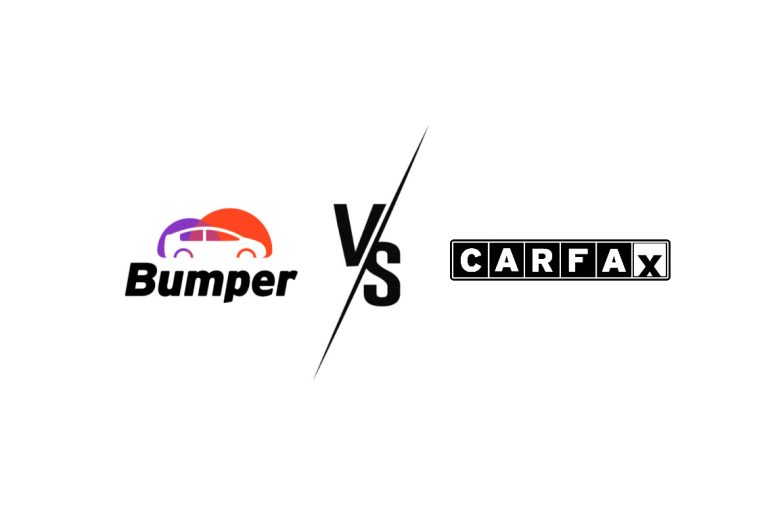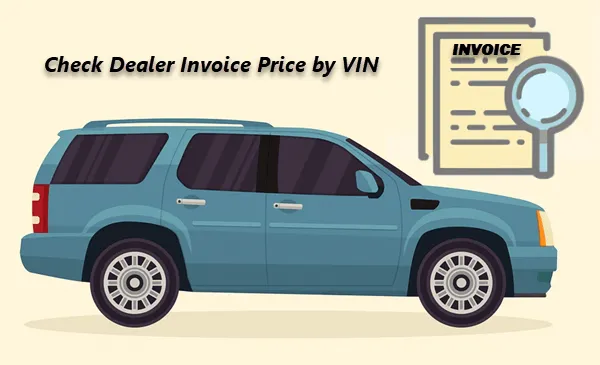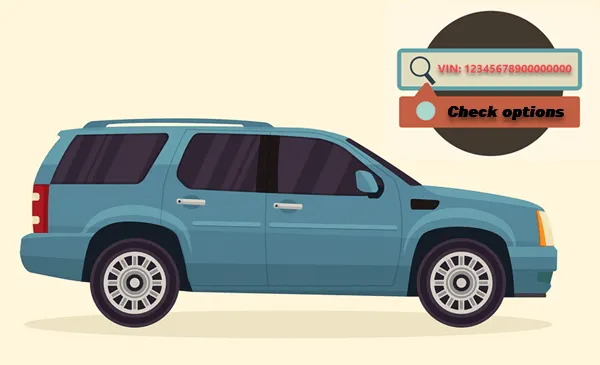How to Check Vehicle Ownership by VIN or License Plate
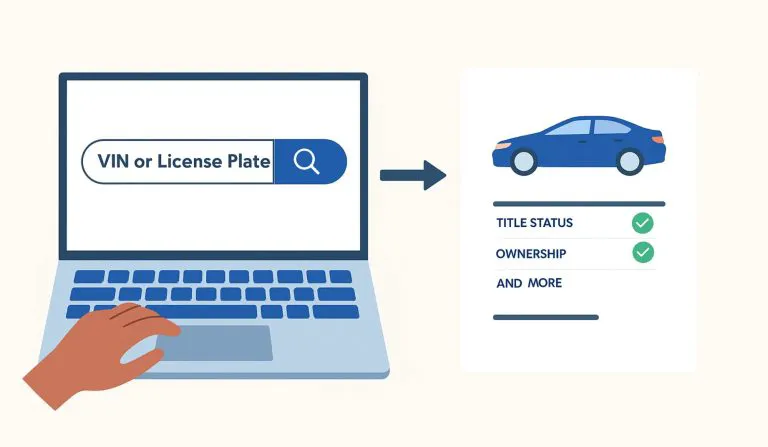
Buying a used car is exciting, but it can also feel risky if you don’t know its full backstory. You might want to confirm the seller is the actual owner, check whether there are hidden issues in its past, or simply be curious about how many previous owners the vehicle has had. You’re not alone, and you’re right to ask these questions. With just a VIN or license plate number, you can check a car’s ownership history easily and get peace of mind before making a move.
Table of contents
🔔 Because of the Driver’s Privacy Protection Act (DPPA), personal owner details (like name and address) aren’t available through public lookups. If you need the actual registered owner’s information, you’ll have to request through the state motor vehicle division (DMV) or law enforcement with a legitimate reason.
Method 1 – Get a vehicle history report
For the most comprehensive understanding of a vehicle’s past and present status, especially when making a significant investment like a used car purchase, an in-depth vehicle history report is the best starting point.
You can think of it as a car’s background check. By compiling a massive amount of data from extensive sources like government agencies, insurance companies, and repair facilities, these reports dig up everything that happened to the vehicle, such as:
- Ownership timeline: See how many owners a car has had, whether it was used for personal driving, rentals, fleets, or even as a taxi.
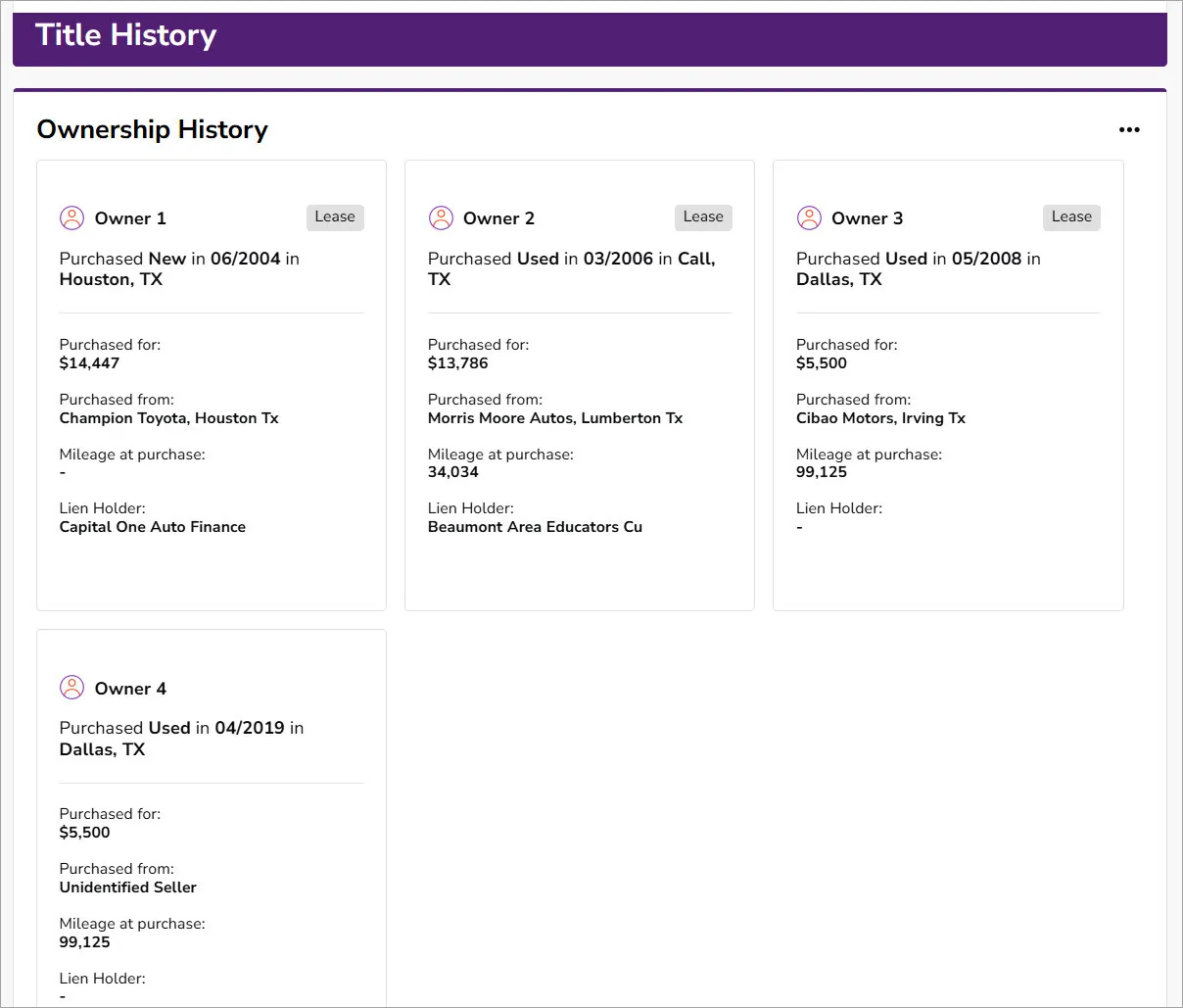
- Title and registration history: Track title changes across states, spot potential “title washing”{{Title washing is a fraudulent practice to remove the title brands (salvage, flood, or rebuilt) to make the title appear clean and increase its value.}}, and confirm clean ownership.
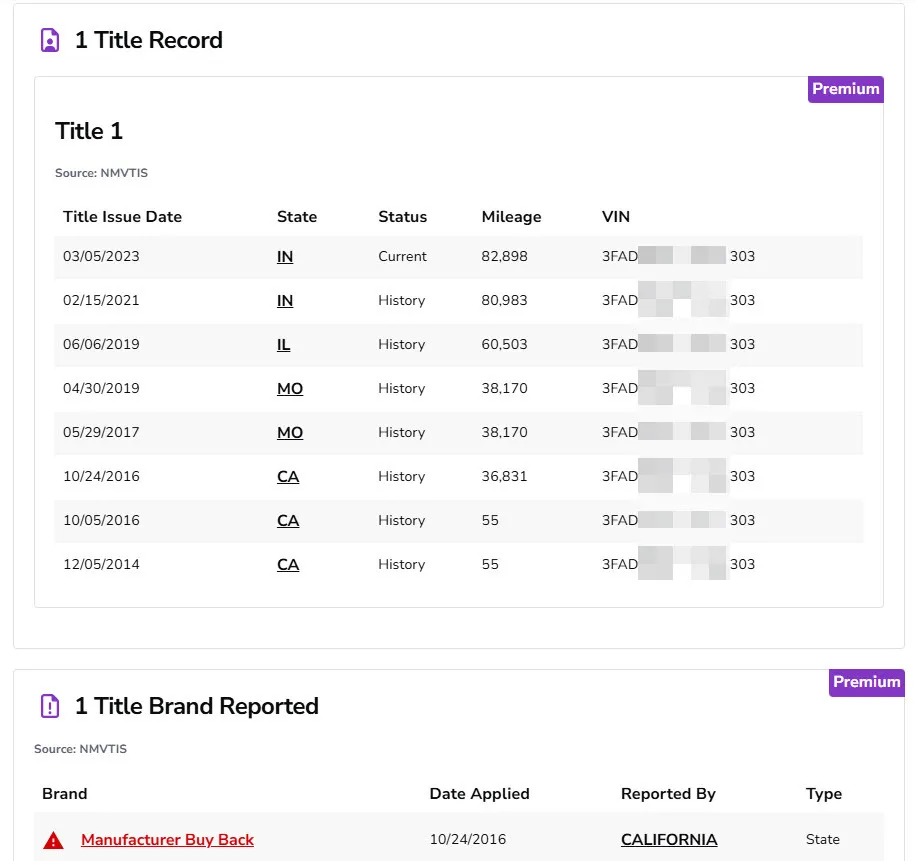
- Accidents and damage: Learn whether the car has been in crashes, floods, and other incidents, along with the extent of reported damage.
- Vehicle specifications: See a full rundown of original equipment, options, and packages so you know exactly what’s on the car.
- Sales listing history and market value: Some providers, like Bumper, even show where the vehicle has been listed for sale, for how much, and how long it stayed on the market. You’ll also get an average market value for similar vehicles to help gauge if the asking price is fair.
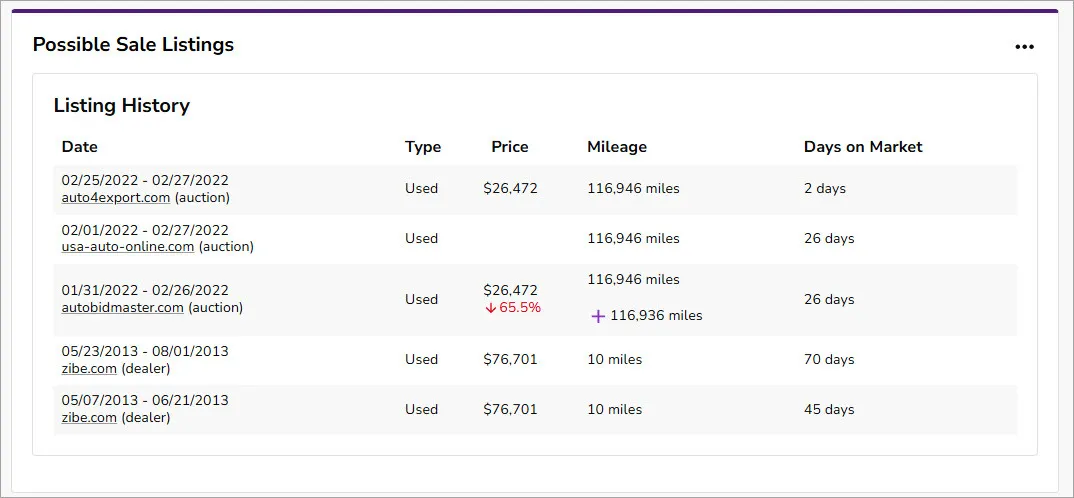
Note: A vehicle history report only shows what’s been officially reported. A minor fender-bender that was never reported to the insurer or a repair done at an independent shop may not appear in these databases. So always pair the report with a physical inspection or have a trusted mechanic check the car.
How to get a vehicle history report
There are various vehicle history report providers. Carfax and AutoCheck are widely known for their comprehensive service and accident records. But if you’re looking for a cost-effective choice rather than paying a steep price for a single report, Bumper is recommended.
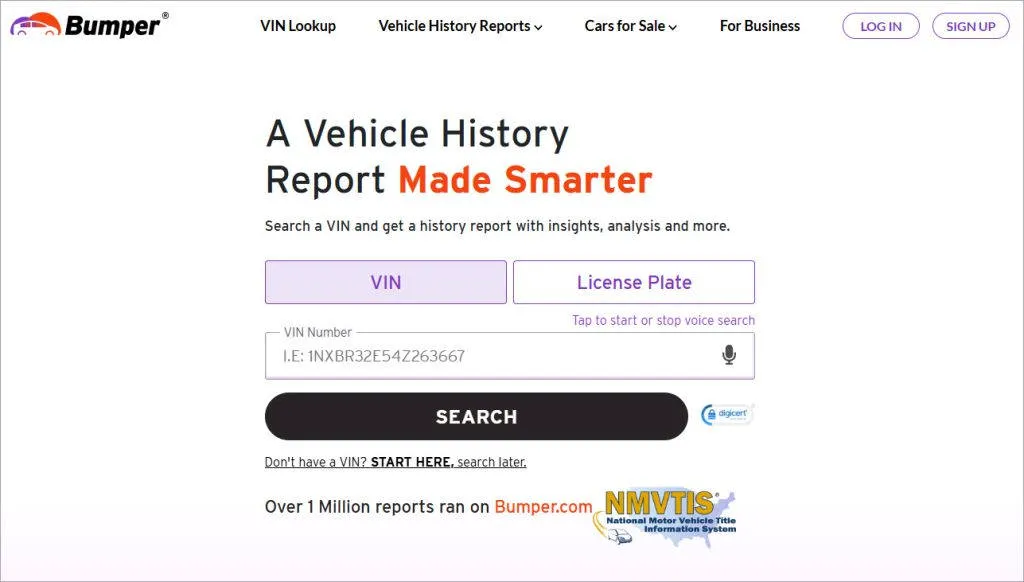
Bumper pulls reliable vehicle title history directly from the NMVTIS, the official federal title database, and also shows sales history and unique market value insights that are not available in other similar services. Instead of charging per report, it offers an affordable subscription of 50 reports for $27.99/month, making it perfect for buyers comparing multiple vehicles.
To use the tool, you simply plug in a VIN or license plate number and click Search. The report will be ready in a few minutes.
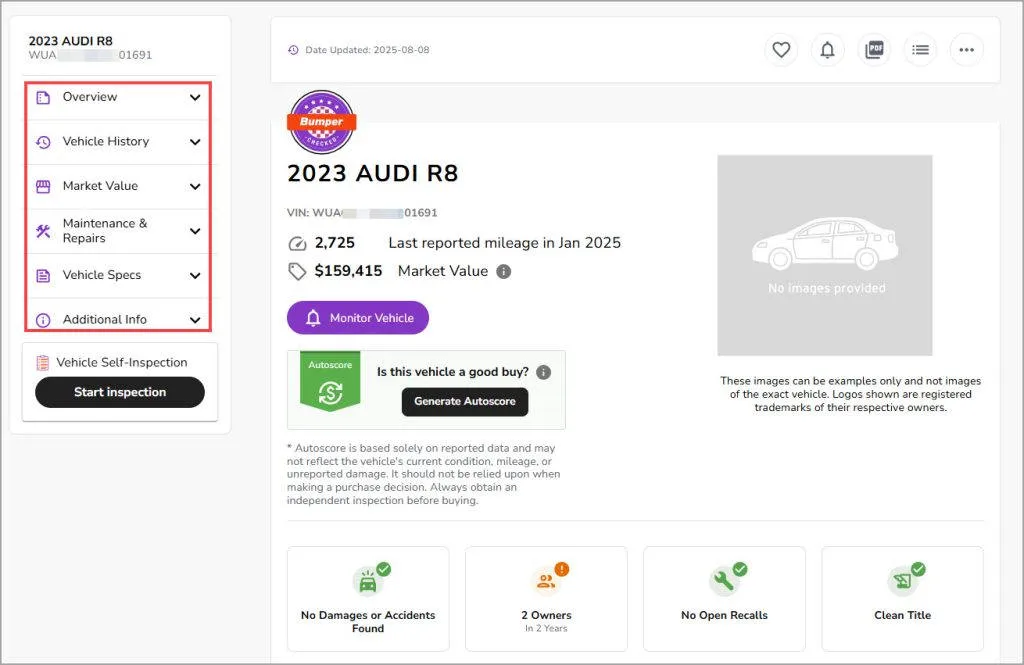
Is it worth paying for a vehicle history report?
For most used car buyers, yes. Vehicle history reports consolidate a vast amount of information all in one place, which would be difficult and time-consuming to track down on your own. That said, if you just want basic info and don’t want to pay, there are free resources out there. They won’t give the same level of depth, but they’re better than going in blind.
Method 2 – Ask to check the title
When purchasing a used car, the most direct and fundamental way to verify the seller’s ownership is to check the vehicle title, whether it’s physical or electronic. The title, also known as a certificate of title or pink slip, is the legal proof of who owns the vehicle and whether they have the right to sell it.
On the certificate of title, you’re able to find plenty of crucial details like the VIN, owner’s name, title brands, odometer readings, and any lienholder information.
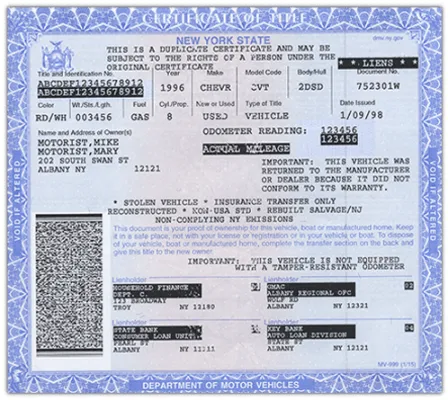
Pro tips: How to properly review the title
Once you have the title in hand, there are several key pieces of information to look for:
- Examine details on the title for matches.
– Make sure the VIN on the title matches the one on the vehicle. It’s typically on the dashboard, visible through the windshield, and on the driver’s side door jamb.
– The name on the title should match the seller’s driver’s license. If there are multiple names, every owner must sign to release the car.
– The title issue date should align with the recent transfer claimed by the seller. - Check if there are any title brands. If the title carries any brands, such as Salvage, Rebuilt, Flood, Lemon{{A lemon title, also known as a manufacturer buyback title, means a vehicle has a significant defect that the manufacturer cannot repair after several attempts.}}, or Junk, the vehicle may have been through significant damage or has a problematic history. Unless you’re hunting for a project car at a steep discount, it’s best to walk away.
- Check if the title is clear. A clear title will list ‘None’ or leave blank under lienholder. However, if it lists a bank or credit union, it means there’s an active lien. The seller needs to provide a lien release document proving the loan has been paid off.
- Look for signs of alternation. An electronic title is easier to alter, so it’s best to check out a physical one. A genuine title is usually printed on high-quality, watermarked paper and has a consistent printing quality. Faded colors, blurred text, or irregular formatting might indicate a forged or fake document.
Fake titles are more common than many buyers realize. Even if everything looks fine, double-check the title details against a vehicle history report or the records from DMV.
Method 3 – Look up title status through the local DMV
Many states now provide an online tool that lets you check a vehicle’s title status by VIN in just a few clicks. For example, the Department of Highway Safety and Motor Vehicles of Florida provides in-depth results, covering the basics (the vehicle make, model, and year), to its title status, current and previous odometer readings, number of owners, and even lien information and crash records.
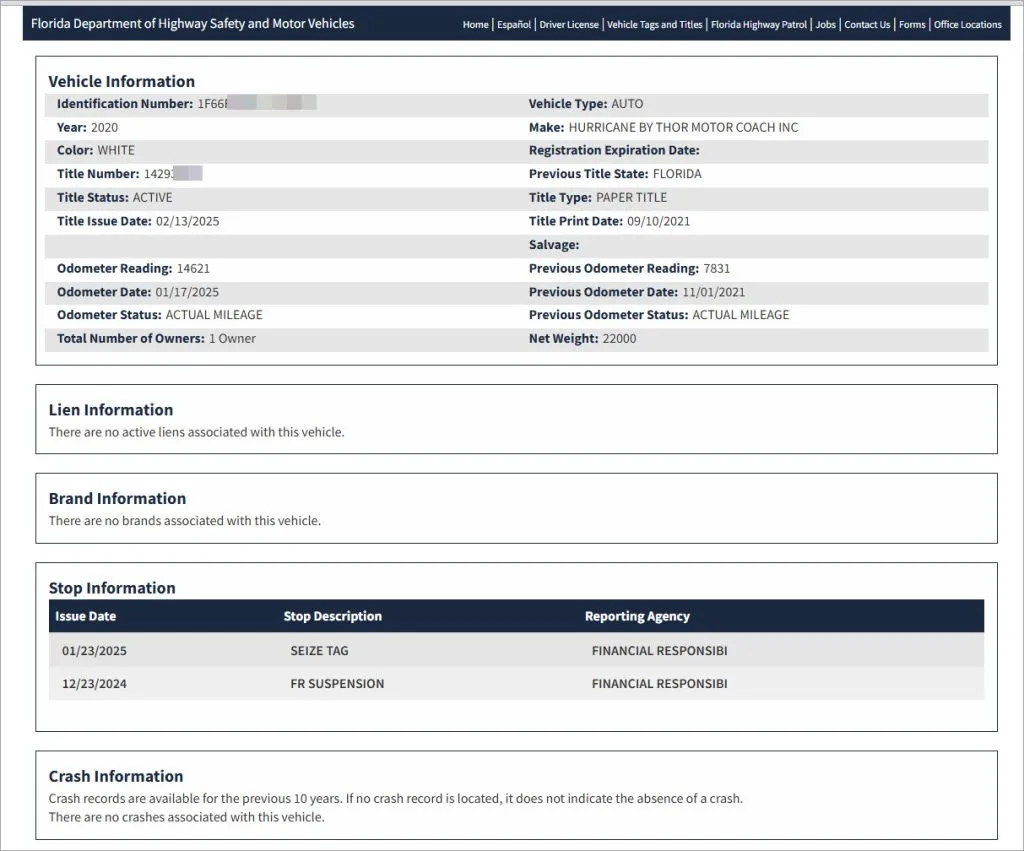
However, this method may not always work and has a few limitations.
- Not every state supports a convenient online search. Some may require you to set up an account before entering the system. And in some jurisdictions, you can only request the information through mail or by visiting the office.
- The amount of information varies from state to state. While some states provide nearly everything you’d find on the physical title, others might only confirm whether a lien exists.
- States don’t automatically share title information. That means a vehicle could ‘wash its title’ in a new state to hide issues. So, for a complete history, you should check title records in every state where the vehicle has been registered.
Wrapping up
While no online tool will reveal the current vehicle owner’s name, the methods above, whether a vehicle history report, title check, or DMV lookup, can give you what you need to make a safe, informed decision.
If you’re buying a car, these checks could save you time and money in future repairs or legal headaches. And if you’re checking a suspicious vehicle, you’ll know whether it’s potentially stolen or has a shady past.
For the owner’s name or personal details, your only option is to go through your local DMV or police with a valid reason.
FAQs
1. How to transfer a vehicle title?
Usually, the seller signs the title (and sometimes a bill of sale), then you take the signed document to your local DMV to register the vehicle in your name. If you’re buying from a dealer, they should handle the paperwork, and you just wait for the title to arrive in the mail.
2. Can I buy a vehicle without a title?
Short answer: don’t. The title proves legal ownership, and without it, you can’t register the car in most cases. There are a couple of exceptions, like very old or specific types of vehicles, but for the average buyers, no title means big trouble.
If the seller claims they lost the title, ask them to apply for a replacement before you buy. If there’s an outstanding lien on the title, the seller needs to provide a lien release. Don’t hand over money before you have the title.
3. How to check if there’s a lien on the vehicle?
The most straightforward way is to look at the title. If the lienholder section lists a bank or credit union, the lien isn’t cleared yet. Alternatively, you can confirm through a vehicle history report or check with the state DMV to determine if a vehicle has a lien against it.
4. How to trace the owner of an abandoned vehicle?
Due to privacy laws, you cannot look up the owner’s name online. If you spot an abandoned vehicle, the right move is to report it to your local DMV or police agency with the license plate number, VIN, and location.
They will try to identify the vehicle and contact the owner. If the owner can’t be located or doesn’t respond, the vehicle will be declared ‘abandoned’ after the notice period (often 7 – 30 days). And the vehicle typically goes to impound or public auction, and you might buy it legally at that point.
In some states, like Texas and Arizona, if the abandoned vehicle is on your property or you reported it, you could apply for its ownership. This involves submitting an application, passing an inspection, and paying titling fees.


 View all of Brinksley Hong's posts.
View all of Brinksley Hong's posts.
